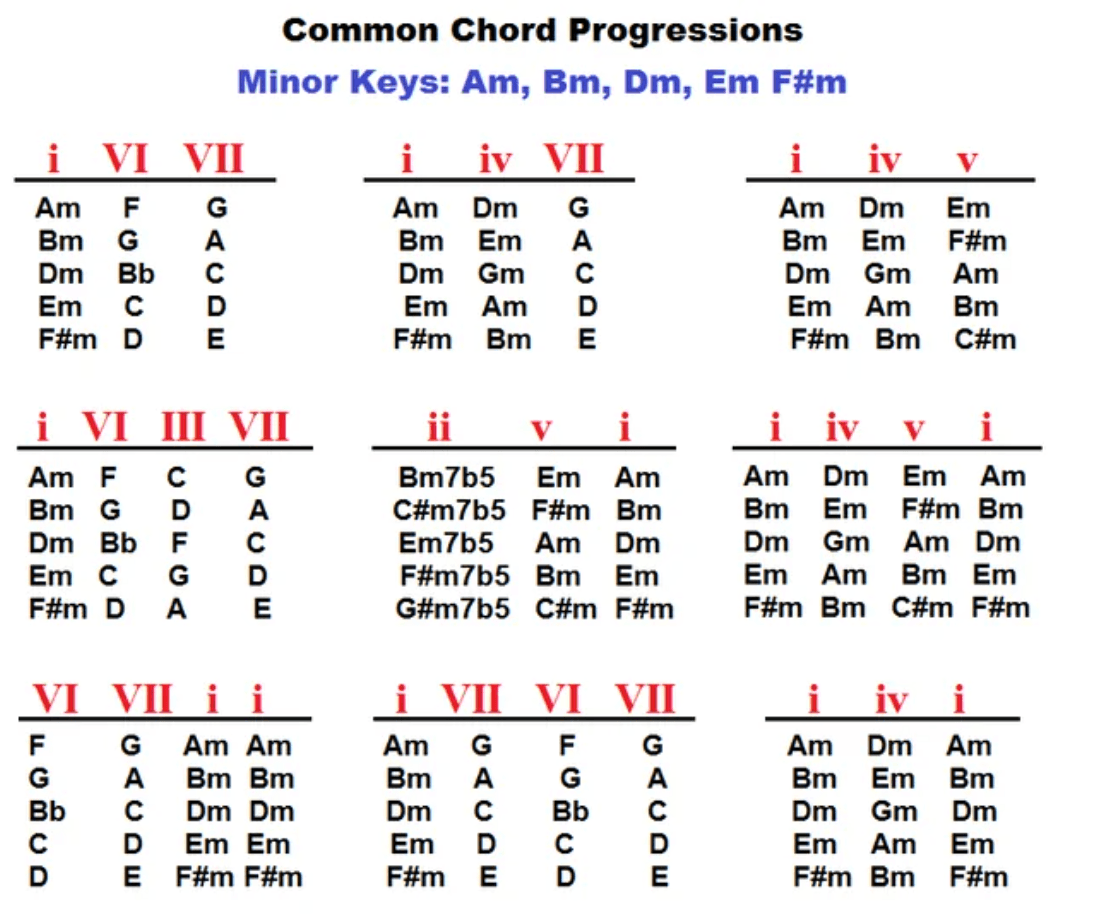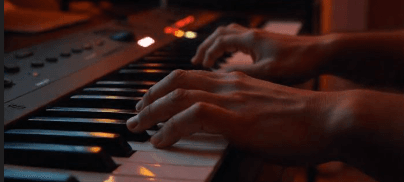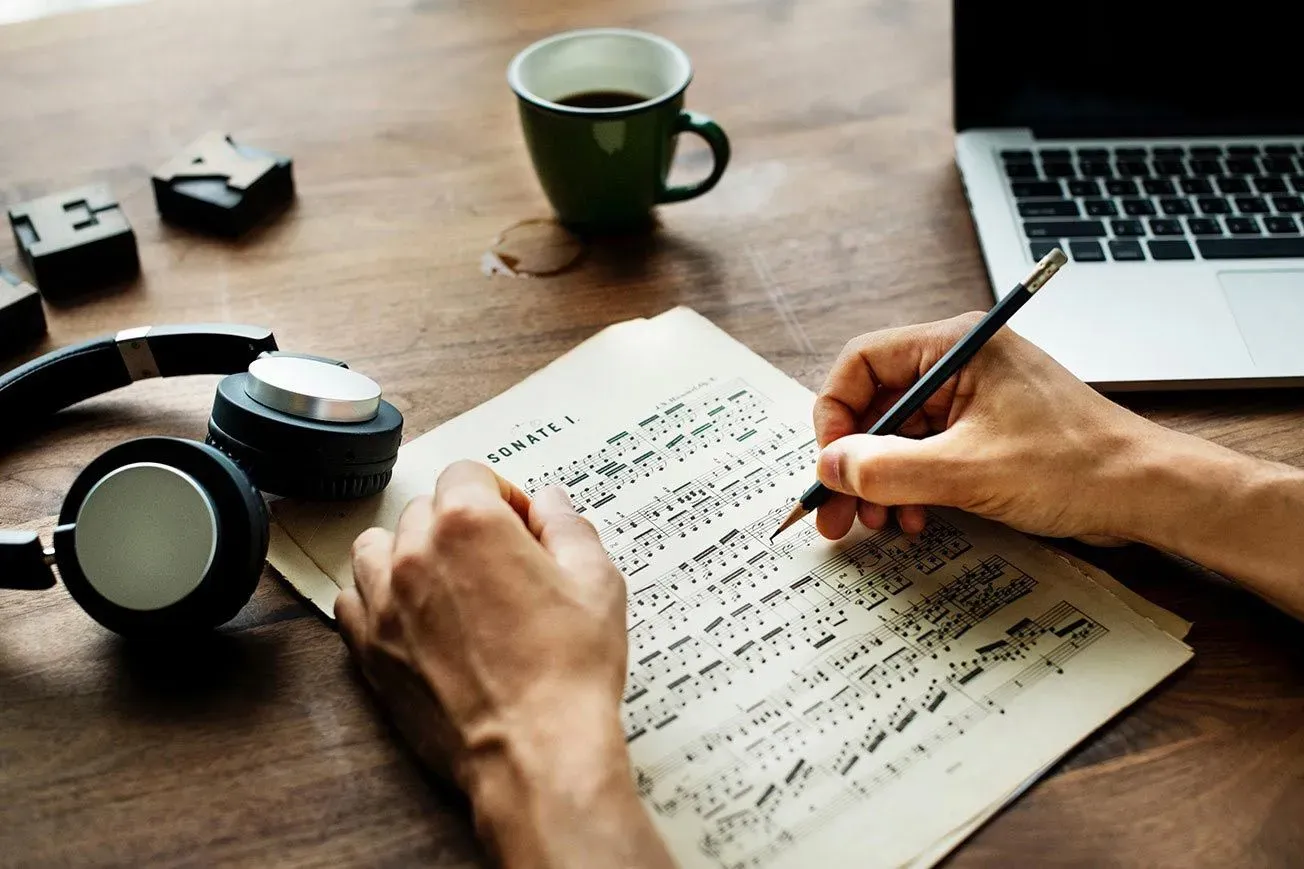The majestic blast of a trumpet heralding a royal entrance, the mellifluous tones of a trombone adding depth to a jazz ensemble, or the rich warmth of a French horn enveloping an orchestra—brass instruments have the power to evoke emotions ranging from triumphant exhilaration to soulful melancholy.
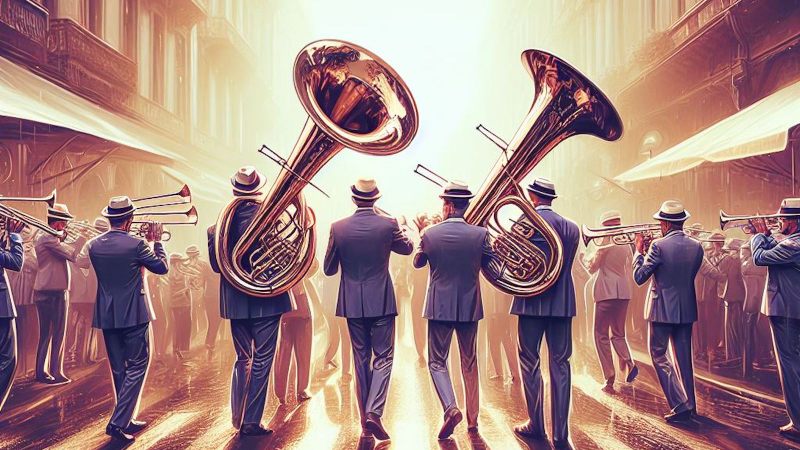
The Resounding Legacy of Brass Instruments
Brass instruments, with their gleaming exteriors and powerful sonic resonance, have long held a pivotal role in the musical tapestry of societies worldwide.
Tracing their roots back to ancient civilizations where they were conceived from rudimentary materials, these instruments have journeyed through time, witnessing remarkable transformations in their design, functionality, and cultural significance.
Today, they not only stand as testaments to musical innovation but also play a pivotal role in diverse genres, showcasing a rich blend of history and modernity in every note they produce.
Brass Instruments: Origin and Evolution
Delving into the rich tapestry of musical history, the brass family stands out with its distinctive character and transformative journey.
Initially conceived from the simplest of materials such as animal horns and conch shells, these instruments have, over time, metamorphosed into the polished, versatile, and sonorously powerful entities we are familiar with today.
Origins from Nature
The nascent ancestors of the contemporary brass instruments were rudimentary tubes, often crafted from organic materials like animal horns, wood, tusks, and even shells.
These primitive versions, while lacking in finesse, played pivotal roles in ancient rituals, ceremonies, and were even used as communication tools in some civilizations.
The Evolution to Brass
With the march of time and the progress of civilizations, the material and craftsmanship behind these instruments underwent significant evolution.
Brass, the alloy with its unique acoustic properties, became the preferred choice for crafting these instruments.
This transformation not only enhanced their sonic capabilities but also lent them their iconic golden sheen.
The Intricacies of Design
Modern brass instruments, while retaining the fundamental nature of their ancestors, have incorporated intricate designs to augment their playability and sound range.
The once simple tubes have now been meticulously molded, curved, and coiled, ensuring they are ergonomic, aesthetically pleasing, and acoustically superior.
Sound Production: A Symphony of Breath and Mechanics
Producing melodious tunes from a brass instrument isn't just about blowing air into it; it's a harmonious blend of human effort and mechanical precision.
Musicians create the characteristic brass sound by pressing their lips against the instrument's metal mouthpiece and generating a buzzing sound.
The Role of Valves
A quintessential feature of most brass instruments is the presence of valves.
These button-like structures, strategically placed along the instrument, are pivotal in manipulating the sound produced.
By deftly pressing these valves in varied combinations, a player can adjust the length of the instrument's air column, thus altering the pitch of the note.
This intricate system has vastly expanded the range and versatility of brass instruments, enabling them to produce a spectrum of notes with remarkable clarity and resonance.
Brass Ensemble: Instruments and Their Significance
1. Trumpet: The Vibrant Herald
One of the most iconic members of the brass family, the trumpet, boasts a lineage that is both rich and varied.
Tracing back through history, the precursors of the modern trumpet were crafted from a diverse range of materials, from conch shells and animal horns to early forms of metals.
These ancient versions served multifaceted roles: signaling devices, communication tools, and ceremonial instruments.
Today, the trumpet, with its bright, piercing timbre and impressive 6 ½ feet length when stretched out, stands as a beacon of agility and precision.
Whether in a symphony orchestra or a jazz ensemble, its vibrant notes ring out, oscillating between harmonious melodies and rhythmic accompaniments.
2. French Horn: A Melodious Paradox
Emerging from the hunting fields of 17th-century France, the French horn has transformed into an instrument of elegance and versatility.
Its expansive coil, culminating in a broad bell, is capable of producing a spectrum of sounds, from gentle whispers to resonant roars.
Covering an impressive 18 feet of coiled tubing, the French horn's melodious capabilities are unmatched.
In orchestral settings, it effortlessly transitions between soulful solos, harmonious accompaniments, and rhythmic punctuations, proving its adaptability and significance.
3. Trombone: The Slide Master
Unique in its design and sound, the trombone is easily distinguishable by its signature slide mechanism.
Comprising thin brass pipes arranged in a meticulous 'S' shape, the trombone offers a range of pitches across its seven distinct slide positions. When fully extended, a standard trombone measures approximately 9 feet in length.
In orchestral compositions, trombones often come together, harmonizing their mellow and resonant sounds, bridging tonal gaps, and providing depth to the ensemble.
4. Tuba: The Deep-Rooted Anchor
Dominating the lower register of the brass family, the tuba stands tall as the ensemble's foundational pillar.
With its deep, sonorous tones, the tuba, stretching about 16 feet in a standard size, provides the critical bass support upon which orchestras and bands construct their soundscapes.
Playing the tuba demands a blend of ample breath control, dexterity, and precision.
But when mastered, it produces a symphonic depth, anchoring not just the brass section but resonating through the entirety of the musical ensemble.
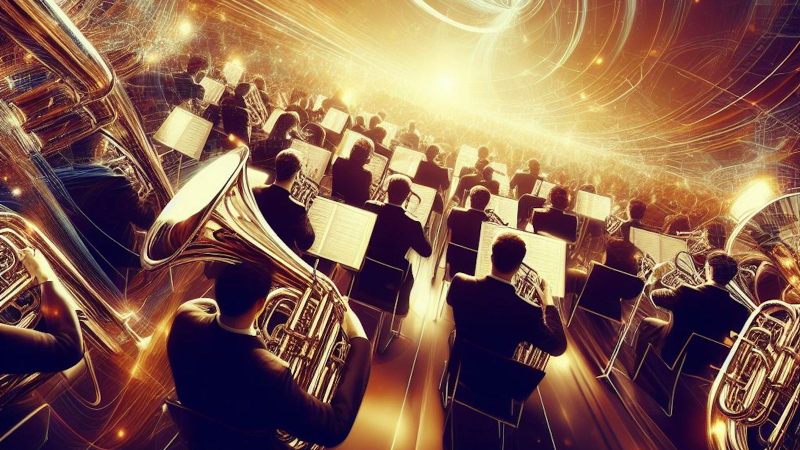
The Mastery of Brass Playing: Techniques and Artistry
The Power of Breath: More than Just Air
The core of every note produced by a brass instrument is the musician's breath.
It's not merely about blowing air; it's the art of controlled exhalation, the dance of airflow that brings life to the brass.
Every player understands that the rhythm, modulation, and synchronization of their breath with the instrument are paramount.
This dance of controlled exhalation brings out the richness and tonal quality of each note, making it resonate with the intended emotion.
Lip Embouchure: Crafting Precision with the Lips
For a brass musician, their lips are not just a part of their body; they are a finely tuned instrument in themselves.
The embouchure, or the precise positioning and movement of the lips against the instrument's mouthpiece, is pivotal in shaping the sound produced.
By subtly altering the tension in their lips and adjusting the mouthpiece's placement, brass players can traverse a vast spectrum of tones, pitches, and emotions.
Navigating the Instrument: Valves, Slides, and More
While mastering breath control and embouchure are foundational, the skill lies in seamlessly integrating them with the instrument's mechanics.
Each valve on a brass instrument unlocks a series of notes.
By deftly pressing these valves in specific combinations, or by smoothly sliding the trombone's slide, musicians can weave intricate melodies and harmonies.
This mastery of valves and slides transforms a brass instrument from a mere tool into an extension of the player's soul.
The Magic of Mutes: Adding Color and Texture
Often overlooked by casual listeners, mutes are a secret weapon in a brass player's arsenal.
These devices, crafted from materials like metal, wood, or plastic, are introduced into the instrument's bell, transforming its sound in myriad ways.
Whether it's the wa-wa effect produced by a Harmon mute on a trumpet or the soft, velvety tones elicited from a tuba with a straight mute, these additions offer a palette of sound colors and effects.
The versatility of mutes enables musicians to paint richer, more varied soundscapes, taking listeners on a nuanced auditory journey.
Brass Across the Board: The Universal Appeal in Diverse Genres
Jazz: The Soulful Grooves and Improvisational Brilliance
Jazz, a genre known for its improvisational nature and soulful melodies, embraces brass instruments like long-lost friends.
Trumpets and trombones are not just instruments in jazz; they are storytellers.
Jazz legends like Louis Armstrong and Dizzy Gillespie have showcased the trumpet's unparalleled versatility, transforming it from a mere instrument to an extension of their voice.
Trombonists, taking cues from maestros like J.J. Johnson, have added depth and richness to jazz compositions, weaving intricate narratives with their sultry and sometimes haunting tones.
Pop and Rock: A Symphony in Modern Melodies
When we think of pop and rock, electric guitars or drum solos might spring to mind. However, the role of brass in these genres cannot be understated.
Iconic bands from The Beatles to Chicago have seamlessly integrated brass sections, infusing their tracks with a unique sonic richness.
Whether it's a trumpet solo cutting through a rock ballad or a trombone adding texture to a pop hit, brass instruments have proven their adaptability and relevance in modern music.
Marching Bands: The Resounding Echoes of Celebration
If there's one place where brass instruments unequivocally steal the show, it's in marching bands.
These bands, whether parading down streets during festivals or elevating halftime shows, rely on the bold and resonant sounds of brass.
From the rhythmic beats of tubas that you can feel in your chest to the commanding calls of trumpets, brass instruments are the heartbeat of these ensembles, defining their character and energy.
Classical: A Timeless Affair with Harmonies
The classical realm, with its symphonies and sonatas, has always revered brass instruments.
While they're integral to orchestras, the emergence of brass quintets—comprising two trumpets, a French horn, a trombone, and a tuba—has added a new dimension to classical performances.
These quintets, with their rich blend of harmonies, showcase the depth and range of brass instruments, taking listeners on a musical journey that oscillates between powerful crescendos and delicate, nuanced melodies.
Unveiling the Top Brass VSTs: Crafting Authentic Brass Sounds in Digital Music Production
In the evolving world of music production, Virtual Studio Technology (VST) plugins have become indispensable tools for emulating the authentic sounds of real instruments.
For composers and producers, the ability to incorporate the rich and resonant tones of brass instruments into their work without having to record a live ensemble is invaluable.
Let's delve into some of the industry's top brass VSTs, each offering its unique blend of versatility, realism, and quality.
1. EastWest Hollywood Pop Brass: The Vibrancy of Pop Brass
EastWest Hollywood Pop Brass stands out in the realm of VSTs, specifically tailored for pop music producers.
Crafted under the expertise of Grammy winner Moogie Canazio, this library brings the electrifying energy of a live brass ensemble straight into digital compositions.
Whether it's pop, rock, funk, soul, or Latin, its vibrant timbre and energetic sound make it a frontrunner in the industry.
Given its stellar quality, affordability, and content richness, it's heralded as one of the best pop brass VSTs in the market.
2. Impact Soundworks Bravura Scoring Brass: The Cinematic Maestro
For composers immersed in the world of film, TV, or video games, the Impact Soundworks Bravura Scoring Brass offers unparalleled depth and versatility.
Recorded in a grand scoring studio, this VST captures the essence of an orchestral brass ensemble in all its grandeur.
Compatible with the free Kontakt player, it offers intricate details and flexibility, making it an affordable yet high-quality choice for those looking to add that cinematic touch to their compositions.
3. Native Instruments Symphony Essentials Collection: The All-Rounder
Native Instruments Symphony Essentials Collection is a treasure trove for composers.
Encompassing not just brass, but also percussion, strings, and woodwinds, this collection is the epitome of versatility.
The brass section, a 32-piece ensemble, was recorded in the acoustically renowned St. Paul’s Church in San Francisco.
Complemented by solo brass and woodwind libraries, it stands as a versatile and authentic brass VST suitable for a myriad of musical genres.
4. Spitfire Audio Symphonic Brass: The Pinnacle of Realism
A result of meticulous effort, Spitfire Audio Symphonic Brass is the culmination of five years of dedicated work.
Recorded with the UK's top brass players at the iconic Lyndhurst Hall at AIR Studios in London, it offers a staggering collection of nearly 86,000 individual samples.
From solo to cinematic ensembles, its vast range ensures unparalleled realism and dynamics, making it a staple for those seeking the very best in brass sound emulation.

Elevate Your Brass Compositions
As you delve deeper into the world of brass instruments, remember that Empress AI Music Tools can further elevate your compositions. Harness the power of cutting-edge technology to bring out the best in your brass sections. Don't miss out on shaping the future of music with Empress!
FAQs:
Q1: What are the main instruments in the brass family?
The primary brass instruments include the trumpet, French horn, trombone, and tuba.
Q2: How do brass instruments produce sound?
Sound is produced when the player buzzes their lips into a mouthpiece, causing the air inside the instrument to vibrate.
Q3: Are brass instruments difficult to learn?
While they have their unique challenges, such as breath control and embouchure strength, dedication and practice can lead to mastery.
Q4: What are brass VSTs?
Brass VSTs are digital tools that emulate the sound of brass instruments, used in music production and composition.
Q5: How can Empress AI Music Tools enhance my brass compositions?
Empress offers advanced tools and algorithms to create various melodies and progressions for your brass compositions
Follow the future of music with Empress. Check out our blog to learn how you can effectively use these AI music tools.
